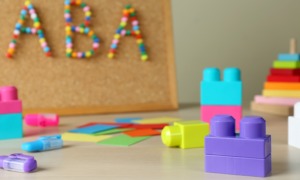Many programs offer at-risk youth access to normal sports and outdoor recreation activities – from soccer to hiking – but few provide them the opportunity to participate in nontraditional (and usually expensive) sports such as skiing and sailing.
Programs that offer these not-quite-extreme sports say the outcomes for the youth are different from everyday sports because they:
Allow Youth to Take Control
Downtown Sailing Center
Baltimore, Md.
(410) 727-0722
www.downtownsailing.org
The Strategy: Offer summer and day programs that give at-risk youth the opportunity to learn sailing skills that teach them independent thinking and how to work as a team.
Origins: Baltimore’s Downtown Sailing Center (DSC) was founded 15 years ago as a club for sailboat owners. Not long afterward, the club sponsored a short sailing excursion for incarcerated youth, and the young people were so enthusiastic about their experience that club members decided to start a formal youth program to offer the same kind of opportunities for Baltimore’s inner-city children.
How It Works: DSC offers a variety of youth programs throughout the year. Its flagship program is Sail Instructor Training (SIT), which is open to sophomores and juniors from Baltimore high schools who complete an application process and are defined as “at-risk kids with promise” by school staff. Nine to 15 youths go through a 12-week summer training program, during which they learn how to sail and to be sailing instructors. Most participants return the following summer to act as instructors for DSC’s other youth programs.
Those programs include a weeklong summer camp for children and youths ages 7 to 18, who learn basic sailing skills, and a program for youths with disabilities. DSC also works with 50 partner organizations, such as Boys & Girls Clubs, to provide half- or full-day excursions and/or sailing instructions for their youth participants.
“There’s something for everybody to do on the boat, and it’s noncompetitive,” said DSC Executive Director Kristen Berry. “The kids get to go wherever they want on the water. They get to exercise choice, something urban kids aren’t used to, but then they have to live with the consequences of those choices.”
Youth Served: DSC serves about 1,500 youth annually. Berry said about 80 percent of those youth are at-risk and normally would not be able to afford to participate in sailing activities.
Staff: DSC employs four full-time year-round staff members and about 50 part-time seasonal staff, most of whom are youths who have completed the center’s SIT program.
Cost: The annual budget is about $150,000. (The center’s fleet of 60 boats was donated by individuals.) Funding comes from individual donations and grants from foundations, including the Knott, Herbert Bearman and Abell foundations. DSC charges for its programs, from $30 per child for day programs offered to program partners (with program partners paying the fee) to $1,000 per child for a five-day seamanship camp on the Chesapeake Bay. Low-income youth can participate in this and other programs with the help of scholarships offered by DSC. The sailing center also offers “needs-based pricing.”
Results: While DSC has not conducted any formal studies, Berry said that 95 percent of participants in the Sail Instructor Training program complete it, and most return in following years to work as paid part-time sailing instructors.
Build Confidence
Trips for Kids Denver/Boulder
Denver, Colo.
(303) 725-6723
www.tripsforkidsdenver.org
The Strategy: Expose at-risk urban youth to the challenges of mountain biking and the great outdoors as a way to build their confidence to try new adventures.
Origins: The Denver chapter of Trips for Kids (TFK) began in 2001. It was one of the first chapters to evolve from the original program created in 1986 by San Francisco mountain biker Marilyn Price. Price, a frequent volunteer at a city soup kitchen, felt bad that youths she met there didn’t have the opportunity to experience nature the way she did in her free time. She was inspired to establish TFK, which became a nonprofit in 1988, to provide mountain bikes and bike trip opportunities to at-risk youth in the San Francisco Bay area.
How It Works: The Denver chapter partners with area schools, local Boys & Girls Clubs and area residential treatment facilities to identify youth who would benefit from the outdoor adventure of a daylong bike trip in the hills surrounding the city. TFK supplies bikes, helmets, gloves, and water bottles for the treks. “We’re set up to be a one-shot deal,” said TFK-Denver Executive Director Andrew Goodwillie, “though we work with some programs year after year and see the same kids again and again.”
TFK Denver also runs a winter after-school program at city middle schools one day a week at which participants learn to fix and maintain bicycles donated to TFK. Each participant gets to keep a bike that he or she helps to repair and also leaves the program with a bike tool kit.
Youth Served: TFK Denver, which recently added the city of Boulder to its program, serves about 600 to 700 youths a year, ages 10 and older. Participants are generally selected by the youth agencies with which TFK partners; Goodwillie said about 40 percent of the youth are from residential treatment or juvenile detention facilities. TFK also serves youth as old as the early 20s through a partnership with Urban Peak, a program for homeless youth.
Staff: TFK Denver has two paid staff members and two dozen to three dozen volunteers who help run the mountain bike outings.
Cost: The annual budget is $80,000. In each of the past two years, the program received grants of $10,000 from REI-Denver, an outdoor gear and clothing store. It raises the additional funds locally. TFK Denver, which received five mountain bikes from REI as an initial investment, also has received bikes from Specialized, a bike manufacturer in California, and it accepts individual donations of mountain bikes.
Give Them a Story to Tell
The Alpine Society
Souix Falls, S.D.
(605) 335-7260
www.thealpinesociety.com
The Strategy: Give low-income youth the opportunity to ski and snowboard and build their confidence in trying new skills.
Origins: The Alpine Society was started in 2000 by a group of Great Bear Recreation Park ski area regulars who wanted to give low-income youth the chance to participate in the expensive pursuits of skiing and snowboarding. The group sought funding and partner support from the Sioux Falls Area Community Foundation, which helped connect them with at-risk youth through local after-school programs, YMCAs, and the McCrossan Boys Ranch, which offers residential treatment programs to troubled boys, along with equine therapy. The Alpine Society had 100 youth participants in its first year.
How It Works: The Sioux Empire United Way offers free activity coupons to area youth (including coupons they can use for snow sports at Great Bear), and the Alpine Society finds youth at area schools who have expressed interest in snow sports but can’t afford to engage in skiing or snowboarding. Interested youths must complete an application. If approved, youths are given a free skiing or snowboarding lesson, free equipment rentals and a free lift ticket for a day. While the Alpine Society sponsors individual youths only once, those who really take to the sport can obtain special grants through the society to return to the slopes and improve their skills several times a season.
Angie Kent, the Alpine Society’s director of volunteer programs and at-risk youth, says youths can go to Great Bear individually to receive their skiing or snowboarding lesson, but, because of transportation issues, most go as part of a school or youth agency group.
Kent said the process of learning skiing and snowboarding helps at-risk youths realize they’re capable of success in something new. “They learn to do something step by step on the slopes, and that transfers to the classroom,” she said. Even better, it gives them the opportunity to do something unique. “Every kid wants a story to tell,” Kent said.
“It makes them feel normal,” she says. “They see skiing on the Olympics, but because it’s expensive, it’s another ‘can’t’ for them, one more barrier that’s out of their control.” Kent says programs like hers prevent kids and parents from having to worry about the cost issue, while still providing access to something memorable.
Youth Served: The Alpine Society serves 100 to 200 youths a year, most from families that earn $20,000 or less annually. Most participants are white, but Kent said there are also Hispanic participants, as well as other immigrant youth who are English as a Second Language learners. Participants range in age from 5 years to 18 years old.
Staff: The Alpine Society has no paid staff; it is run entirely by volunteers. It relies on teachers and staff members at the schools and youth programs it serves to help transport kids to ski lessons. Club directors and two dedicated members help with the skiing and snowboarding instructions, which are provided by Great Bear personnel.
Cost: The annual budget is under $500; the United Way covers the cost of ski lessons, rentals and lift tickets, usually $45 to $50 per participant per session.






























